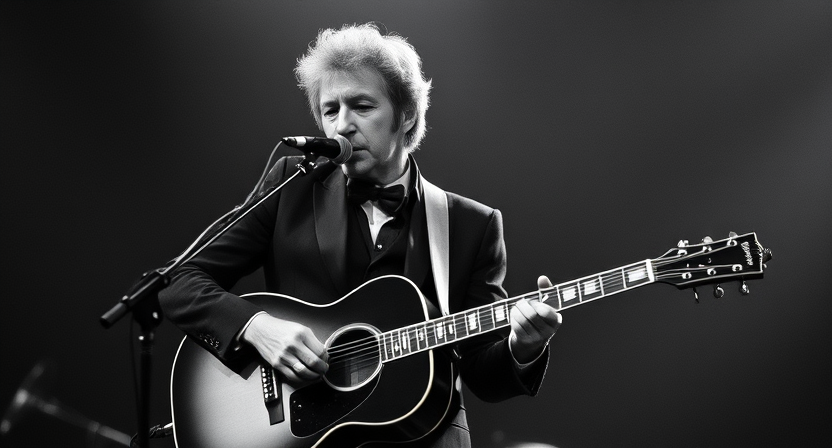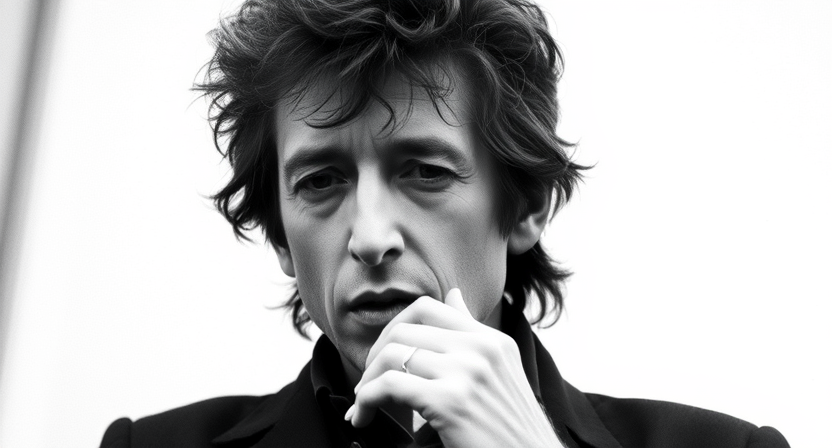
In music, name-of-mouth has been much more associated with Bob Dylan than anything else. It happens that he is also one of the most defining figures that shape contemporary culture. His life and work are among those things that would always influence music, poetry, and social activism. We will use the PAS method in looking into Dylan’s career, special impact, and the challenges he had while becoming a cultural icon for this blog.
Bob Dylan Conflicts of the Time Need a Voice
The conflict of the 1960s was marked by major social and political change sweeping over the United States and much of the world. Added to the long-standing civil rights issue, the war in Vietnam, and an emerging counterculture created a very charged environment in which young people especially needed voices to articulate their strife, frustration, and even hope.
Then, mainstream music did not talk about this; it simply became an escape route rather than solutions to problems. What the world then needed was the voice that will tell the emerging discontent, rise against authority, and promote change. Here was a young man who had his guitar, a harmonica, and a gift at making hard issues of society seem simple yet in potent songs.

Bob Dylan The Travels and Turbulence of Bob Dylan Childhood Background and Strife
Born to Rose Isabelle and Abram Zimmerman on May 24, 1941, in Duluth, Minnesota, Bob Dylan grew up in Hibbing-a small mining town. He was introduced to music at an early age, developed a great interest in folk and blues music, and enjoyed the sound of musicians such as Woody Guthrie and Hank Williams; he started teaching himself guitar and piano by coping with the sounds that amazed him.
Dylan attended the University of Minnesota for a year or so but left to pursue his passion for music. In 1961, he moved to New York City to join the Greenwich Village folk scene. Success in the competitive music world did not come easily, however. Dylan often played in small coffeehouses and clubs, making little money and living very close to being poor.
Bob Dylan Finding His Voice
Dylan’s initial work was not remarkable or complete. The critics portrayed his voice as “nasal” and “grating.” Neither was the audience used to it. Record labels did not want him, and the critics could not see a future for him since they felt that he would not stand the test of time.
It was songwriting that tagged a label on Dylan. His words were poetic, honest, and a reflection of the world around him. He borrowed folk traditions but meshed them together with issues of his times. In 1962, Dylan came out with his first album under his name, which was not too popular. However, it was the second album in 1963, “The Freewheelin’ Bob Dylan” that catapulted him into fame, and hits like “Blowin’ in the Wind” and “A Hard Rain’s a-Gonna Fall.”.

Bob Dylan Controversy and Criticism
As Dylan became more famous, people paid closer attention to him. In 1965, he famously “went electric” at the Newport Folk Festival, playing with a full rock band. Some fans liked the change, but others said he was not true to the folk movement. The reaction was strong, with audiences booing at live shows. Even with the criticism, Dylan stayed strong, saying, “I’m just trying to be me.”
He also had his personal problems. Pressure to make good music and answering public expectation weighed down on him. In 1966, after he suffered a motorcycle accident, he disappeared from public view, and his future remained in suspension for his fans and critics.
Bob Dylan How Dylan Changed Music and Culture Pioneering a New Form of Expression
Songwriting changed forever with Bob Dylan, showing the world that meaning in lyrics could sometimes overshadow the music. He is at the forefront of writing on themes of war, injustice, and love, with extreme honesty and depth. Tracks like “The Times They Are A-Changin'” often act as beacons for civil rights and anti-war activism, surging forth from the anger of the 1960s.
He combined folk with rock then with blues even gospel and country to establish a completely new music genre. Important albums among his works include “Bringing It All Back Home” (1965), “Highway 61 Revisited” (1965), and “Blonde on Blonde” (1966). He showed the popular music its capabilities.
Unwilling Icon
Though he was regarded as the voice of a generation, Dylan never believed that he needed to be labeled as belonging to one particular group. Often, he rejected labels, nor did he like to be limited as a protest singer. This was part of what made Dylan charmingly unpredictable. By the change he made with the deeper, personal themes found in albums like “Blood on the Tracks” in 1975, Dylan had demonstrated he could evolve without sacrificing the creative vision.
Bob Dylan Awards and Influence
Throughout Dylan’s years, he bagged numerous awards. Among them are:
10 Grammy Awards that include the Lifetime Achievement Award.
Presidential Medal of Freedom in 2012.
Nobel Prize in Literature by the Nobel Committee in 2016 for his impact deep into modern poetry and songwriting.
His work goes beyond what is simply music. Several artists find inspiration in Dylan, such as the Beatles, Bruce Springsteen, and Patti Smith. His inspirations extended from being a songwriter but also inspired the poets and the novelists using metaphors in his lyric construction and storyline structure.

The Never-Ending Tour
He declares his love for music through the legendary “Never Ending Tour” that started in 1988 and lasts to date. He performs thousands of concerts every year, hence remaining anonymous and a mystery for the public appearance and changing the popular songs often.
Lessons from Dylan’s Journey
Being Original is Important: Dylan’s decision not to follow what others expect or what is in is important. He remained true to his ideas, even if that pushed away fans or critics. Change is Important: From folk music to rock to gospel, Dylan has often changed his style, hence showing that growth and change are important to be important.
Through Bob’s music, Art Can Drive Change: Dylan proved that art in itself can be potent for social change and politics-the type that encourages and inspires movements in people to re-question the order of things in society.
The story of Bob Dylan is about not giving up, being creative, and making a difference. He started from a simple life in Minnesota and became a Nobel Prize winner. Dylan has been an important person in music and culture. His skill to change, create new ideas, and stay important for sixty years shows how smart he is.
Dylan’s work makes us think of the power of storytelling and of using art as a way of reflection and change in the world. Whether a lifelong fan or a new follower of his music, the legacy of Dylan can inspire any artist who seeks to make their mark in their chosen field.
As Dylan once said, “A hero is someone who understands the responsibility that comes with his freedom.” And that he proves to be, through music, words, and a continuous quest for the truth, Bob Dylan.




